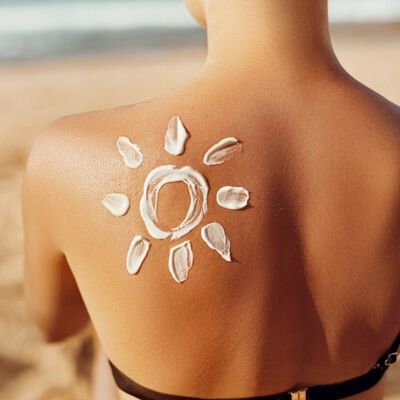
Water-Resistant Sunscreens that work even in Monsoon Days
Did you know that up to 80% of the sun’s UV rays can pass through clouds even during monsoon showers? Just because the sun is covered, it does not mean that your skin is safe. Your sunscreen may leave your skin unprotected to the effects of the sun; by providing cover against UV, dark spots and premature aging, humidity and rain, and sweat can be factors in diminishing the effectiveness of your sunscreen product.
Hello, water-resistant sunscreens.
Whether you have oily, dry, or sensitive skin, switching to a water-resistant sunscreen during this season is one of the smartest skincare decisions you can make.
Here in this blog, we will demystify the sunscreen water-resistant properties, the main advantages of sunscreen during the rainy season, and the most suitable sunscreen products as recommended by dermatologists, including the efficient range of Cetaphil sunscreen, which fits all kinds of skin.
Now, let us go into the reasons why this skin care should be a permanent feature in your monsoon bag.

What Makes a Sunscreen Water-Resistant?
When a sunscreen is declared as being water-resistant, its formulation maintains its level of SPF protection even after exposure to water or sweat, typically for 40 to 80 minutes. But water-resistant is not waterproof. It must also be reapplied after some duration.
Key Features of Water-Resistant Sunscreen:
- Film-forming ingredients: These create a protective layer that adheres to your skin, resisting sweat and rain.
- Oil-free & non-comedogenic options: Perfect for acne-prone or oily skin types.
- Broad-spectrum protection: Shields against both UVA and UVB rays, essential during cloudy monsoon days.
- Dermatologist-tested formulations: Especially important for sensitive skin to prevent irritation or allergies.
Hint: Always read the label for the duration of water resistance, such as 40 minutes or 80 minutes after contact with water.
Benefits of Using Water-Resistant Sunscreen During Monsoon
Why Choose Water-Resistant Sunscreen?
- Longer protection during rain or sweating
- Ideal for humid weather when regular sunscreen melts away
- Less likely to clog pores, especially for those with oily skin
- Reduces the risk of tanning and sunburn even on cloudy days
- Suitable for outdoor activities like commuting, sports, and travel
- Perfect for sensitive skin, when chosen from dermatologist-recommended ranges like Cetaphil sunscreen
Did you know that UV rays are not filtered by rain? The extreme level of humidity may sometimes increase the level of skin sensitivity, which is why the SPF protection is of even greater importance.
Top Water-Resistant Sunscreen Picks for Monsoon
Whether you’re heading out for errands, a jog in the drizzle, or a long workday, here are some of the best water-resistant sunscreens based on your skin type:
Sunscreen for Oily Skin
Choose: Lightweight, non-comedogenic, gel or matte formulations.
Why: Prevents clogged pores, reduces shine, and stays put even when sweating.
Product Spotlight:
Cetaphil Sun SPF 50+ Light Gel
- Water-resistant
- Broad-spectrum protection
- Non-greasy and fast-absorbing
- Dermatologically tested for sensitive and oily skin
Sunscreen for Dry Skin
Choose: Cream-based, hydrating formulas with added moisturizers.
Why: Prevents dryness, flaking, and soothes monsoon-related skin tightness.
Product Spotlight:
Cetaphil Sun SPF 30+ Liposomal Lotion
- Offers hydration and UV protection
- Long-lasting water resistance
- Suitable for dry and combination skin
Sunscreens with Natural Ingredients
- Choose: Products with soothing agents like Aloe Vera, Cica, or Vitamin E.
- Why: Helps calm irritation-prone or sensitive skin, especially in fluctuating weather.
- Tip: Even natural ingredients must be dermatologically tested to avoid reactions during the humid monsoon season.
Use the Cetaphil AI Skin Analysis Tool for personalized product recommendations based on your skin type.
How to Apply Water-Resistant Sunscreen Correctly
Even the best sunscreen can fail if not applied properly, especially in the monsoon.
Application Do’s:
Apply 20 minutes before stepping out; this allows the sunscreen to bind properly to the skin.
Use the right amount.
½ teaspoon for the face and neck
1 teaspoon per limb
Don’t forget the exposed area.
Ears, neck, feet, and hands
Reapply every 2 hours, or after sweating or towel drying, layer under makeup. Apply sunscreen before primer or BB cream for added protection.
Bonus Tip: Apply sunscreen even when indoors near windows, as UVA rays can penetrate glass.
Where to Buy Water-Resistant Sunscreens
The simplest solution to finding out whether you are purchasing genuine products that are actually recommended by dermatologists is to buy them in recognized outlets.
Purchase From:
- Official brand websites: Visit Cetaphil India for a full list of water-resistant sunscreens.
- Dermatologist clinics: Especially if you have sensitive skin or a history of sun allergies.
- Pharmacies and medical stores: Look for licensed, sealed products.
- Reputed e-commerce platforms: Like Amazon, Nykaa, or 1mg (ensure they are authorized sellers).
Always check the manufacturing date and seal before using any sunscreen.
Conclusion
With the erratic pattern of the monsoon rain, your skincare should not be left behind. The first frontier is water-resistant sunscreens, which will protect you against the UV rays, the sensitivity of the skin, and long-term destruction. Need a sunscreen to block out the burn, whether you have oily or dry skin or reactive sensitivities? There is a Cetaphil sunscreen ready to guard you against the elements.
Make your SPF work as hard as you do, no matter the weather. Don't forget to try the Cetaphil AI Skin Analysis Tool to discover which water-resistant sunscreen is perfect for your skin type.
Stay protected, stay radiant!
FAQs
What SPF level is recommended for water-resistant sunscreens?
In the case of water-resistant sunscreens, it is normally advised to go with 30 or more SPF. SPF 30 prevents nearly all the UVB rays, ninety-seven percent, and SPF 50 is a little more. Select a wider spectrum-based sunscreen so as to cover the UVA, particularly around the monsoon season, which is cloudy and humid.
How often should I reapply water-resistant sunscreen during the monsoon?
It does not stay on long after gaining perspiration or being soaked; however, it should be applied after every two hours, even when labeled waterproof. It may be dried by rain and humidity. To give maximum protection, it is recommended to apply liberally to all exposed skin and to reapply even outdoors where no sun may be evident.
Can I use water-resistant sunscreen on sensitive skin?
Yes, but preferentially dermatologist-recommended, fragrance-free, hypoallergenic ones such as the Cetaphil sunscreen. They are aimed at sensitive skin and provide broad-spectrum protection and are non-irritating. First time, always patch test and never buy formulas containing alcohol, harsh preservatives, or strong chemical filters.
Is water-resistant sunscreen effective during water activities?
Indeed, sunscreens that stay on are water-based and last 40-80 minutes when pertaining to activities such as swimming or sweating. Nevertheless, they have to be reapplied following a towel drying, a swim, or after sweating to ensure the same UV protection throughout the process.
Does water-resistant sunscreen protect against both UVA and UVB rays?
Only if it's labeled "broad-spectrum." Water-resistant simply means it adheres better to skin during moisture exposure. For full protection against sunburn and premature ageing, ensure your sunscreen is broad-spectrum, shielding you from both UVA and UVB rays.




